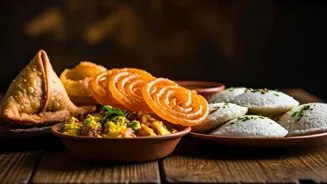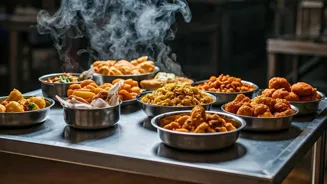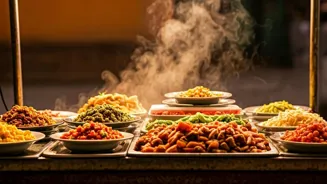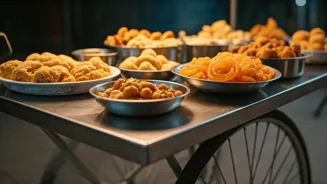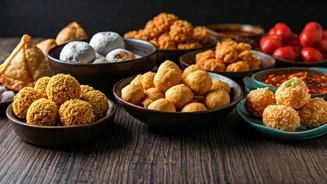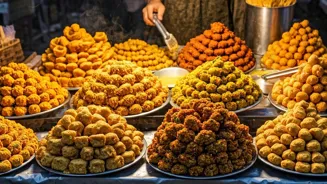A Culinary Adventure
Indian street food presents a captivating array of flavors and textures, making it a popular culinary adventure. This food, prepared and sold on the streets,
is an integral part of Indian culture, offering a glimpse into the nation's diverse regional cuisines. From the bustling streets of Mumbai to the narrow lanes of Delhi, street vendors serve up a variety of dishes, each with its unique taste and preparation. Many foods have been developed over centuries, passed down through generations of cooks, reflecting local traditions and ingredients. The appeal of street food lies not just in its deliciousness but also in its affordability, accessibility, and the lively atmosphere in which it is enjoyed. For many, street food represents the authentic taste of India.
The Diversity of Flavors
The diversity of Indian street food is astounding, with each region contributing its unique culinary specialties. Mumbai's street food is famous for its pav bhaji, vada pav, and the spicy bhel puri. In Delhi, one can savor the tangy chaats, parathas, and the rich flavors of butter chicken and kebabs. Kolkata offers puchkas (pani puri), rolls, and a variety of sweets like rasgulla. South Indian street food includes idli, dosa, and vada. These dishes often feature an array of spices, herbs, and ingredients, carefully blended to create complex flavor profiles. Many of these items have evolved over time, with each vendor adding their own twist. The result is a culinary mosaic that reflects India's rich heritage and the constant evolution of its food culture. Each city has its own unique take, creating a wide spectrum of tastes.
The Popularity Explained
The widespread popularity of Indian street food stems from a variety of factors. The accessibility and affordability of street food make it a convenient choice for people from all walks of life. The quick service and casual dining experience appeal to busy individuals and families. The vibrant street-side setting adds to the sensory experience, making it a social and enjoyable experience. Street food offers a taste of local culture and cuisine. Its availability at any time of the day or night caters to diverse cravings. The affordable prices also make it accessible to a broader audience. The use of fresh ingredients and the hands-on cooking methods employed by street vendors create a strong sense of authenticity. The food's bold flavors are also a key driver of its appeal, ensuring that customers keep returning.
What Makes it Viral?
The internet and social media have significantly amplified the reach and appeal of Indian street food. Food bloggers, vloggers, and influencers create content showcasing the diverse and exciting world of street food. Through videos and posts, they document their experiences, share reviews, and highlight the unique aspects of each dish. The visual appeal of street food, with its vibrant colors and sizzling presentation, makes it a compelling subject for online content. Social media platforms allow vendors to promote their food, build a loyal customer base, and even achieve viral fame. This online presence also contributes to a wider awareness of the food and its popularity. Word-of-mouth through these digital platforms is the key to this growing trend.
Hygiene and Considerations
While the taste and variety of Indian street food are undeniable, concerns regarding hygiene and food safety are important. Many vendors take pride in their preparation methods and maintain clean surroundings, while others may have inconsistent hygiene standards. When selecting street food, it's essential to observe the vendor's practices, focusing on cleanliness and food handling. Popular and busy stalls often indicate that food is freshly prepared and quickly consumed. The consumption of street food can sometimes lead to health issues, so it's vital to be cautious and aware of any potential risks. It's best to opt for places with good reviews and a reputation for food safety. Be mindful of food handling and preparation practices.
